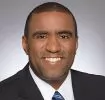On March 9, 2022, President Joe Biden signed the "Executive Order on Ensuring Responsible Development of Digital Assets" (the order), outlining his administration's intention to begin a strategic review of potential legislative and regulatory approaches to digital assets. Having grown into a $2 trillion dollar industry practically overnight, proponents and opponents of digital assets can agree on one thing: this is merely a directive to federal agencies to cooperate with one another while studying the industry and making recommendations that could inform future lawmaking.
While it does not drop an anchor on any specific issue or stake out positions, the order marks an official and long-anticipated acknowledgement of the digital asset era by the Biden administration. Citing the growth and scale of the industry, the White House acknowledges that digital assets are here to stay as financial and technological realities.
The order further paints the industry with the widest possible brush, defining "digital assets" as digital currencies, financial assets, and instruments, as well as "claims" relating to payments, investments, and transmission or exchange of funds, going as far as "other representations of value." We can expect federal regulation of all digital tokens, whether fungible or non-fungible (i.e., NFTs), and whether evidencing currency or physical assets or enabling consumption of goods and services or the exercise of governance rights.
The order focuses on four policy concerns: (1) consumer and investor protection, (2) global market stabilization, (3) mitigation of illicit and dangerous activities, and (4) maintaining U.S. primacy in global finance and technology, while directing federal agencies to submit reports and make recommendations over the next year.
1. Consumer and Investor Protection
The order identifies the administration's top priority as protecting against consumer risks across the digital asset ecosystem. In light of perceived risks of crime, fraud, and theft in digital assets and trading platforms, the order calls for risk mitigation efforts combined with an expansion of access to safe and affordable financial services.
Section 5 of the order also calls for significant administrative guidance. The director of the Office of Science and Technology Policy and the chief technology officer of the United States, in consultation with the Department of the Treasury (Treasury) and the Federal Reserve (the Fed), are to submit to the president a technical evaluation of the infrastructure, capacity, and expertise needed at the relevant agencies to support a potential U.S. Central Bank Digital Currency (CBDC). A CBDC is fiat currency in digital form.
Also, the attorney general, in consultation with the Treasury and Department of Homeland Security (DHS), is directed to report on the role of law enforcement agencies in addressing criminal activity related to digital assets. The director of the Office of Science and Technology Policy, in consultation with the Treasury, Department of Energy, Environmental Protection Agency, and Council of Economic Advisers, among others, is directed to report to the president on the connections between distributed ledger technology and economic and energy transitions, specifically the potential of these technologies to impede efforts to battle climate change and other impacts on the environment.
2. Global Market Stabilization
In the order, the Biden administration identifies the size, complexity, and rapid growth of trading platforms and service providers as contributing to "systemic risk" to the stability of global financial system. In the interest of addressing the risk to "financial stability and financial market integrity," Section 6 of the order calls on the Treasury to convene the Financial Stability Oversight Council to report on such risks and make recommendations.
3. Mitigation of Illicit and Dangerous Activity
The order asserts that digital assets "may pose significant illicit finance risks" that must be mitigated. Section 7 of the Order discusses national security risks associated with the "growing use" of digital assets in money laundering, fraud, theft, and even terrorism. This Section also allows the Treasury, State Department, attorney general, Department of Commerce (Commerce), DHS, the director of national intelligence (DNI), and others to supplement the "National Strategy for Combating Terrorist and Other Illicit Financing" (an executive branch anti-terrorism report, due January 31, 2022). These agencies are also directed to develop a coordinated action plan recommending measures to mitigate these risks and identifying the role of law enforcement pertaining to money laundering and terrorism in the digital asset industry.
From our view, it seems unlikely that this process will unearth any new national security risks related to the use of digital assets. In developing its action plan, we expect the government to draw from its experience combatting money laundering in the art market. In light of the current focus on cutting Russian oligarchs off from the world financial system, we also expect the government to pay special attention to the use of digital assets by high net worth individuals to evade sanctions, perhaps drawing on Treasury's efforts to combat money laundering in the high-end art market.
4. Maintaining U.S. Primacy and Supporting Technological Development
The order purports to be motivated to maintain the United States as the world's financial and technological superpower. It asserts that implementing (or at least studying) a CBDC might be the cornerstone of continued American leadership.
Section 4 of the order states President Biden's policies and plans related to a CBDC, an innovation meant to sustain U.S.-centric financial power. The order stresses urgency in research and development efforts for the design and deployment of a U.S. CBDC and also emphasizes the need for U.S. leadership pertaining to non-U.S. CBDCs, including international cooperation and pilot projects. A handful of countries in the Caribbean have already adopted CBDCs of their own, while scores of governments around the globe are either studying the concept or have begun pilot programs. Further, the order states that any future dollar payment system involving CBDCs should be consistent with both the priorities outlined in the order and "democratic values," including privacy protections, in a manner "that ensures the global financial system has appropriate transparency, connectivity, and platform and architecture interoperability or transferability, as appropriate."
The order goes on to list potential benefits of a U.S. CBDC, including efficient and low-cost transactions and cross-border payments, boosting economic growth, supporting the continued centrality of the United States within the international financial system, and fostering greater access to financial systems with "fewer of the risks posed by private sector-administered digital assets."
The order does not address the likely impact on the commercial banking industry of the adoption of a U.S. CBDC, nor does it explain why the federal government is better able than the private sector to manage retail deposits and payments for hundreds of millions of Americans. But the Treasury, in consultation with the State Department, attorney general, Commerce, DHS, the Office of Management and Budget, DNI, and heads of other agencies, are directed to report to the president on the future of money and payment systems, including analysis of the potential implications of a U.S. CBDC on all aspects and stakeholders of the financial markets and the overall interests of the United States. The order also calls for the involvement of the Fed in assessing the optimal form of a U.S. CBDC and development of strategic steps for potential implementation.
The attorney general, in consultation with the Treasury and the Fed, is to assess whether legislative changes are necessary to issue a U.S. CBDC. They also are expected to provide a corresponding legislative proposal.
Section 8 of the order promotes international comity. Treasury, State, Commerce, and others are directed to establish a framework for "international engagement with foreign counterparts" as to how to "appropriate, adapt, update, and enhance adoption of global principles and standards" for the use of digital assets and to "promote development of CBDC technologies." The framework is supposed to include capacity-building efforts, coordination of global compliance, and general coordination in the international community. This section of the order also calls for ways to enhance American "economic competitiveness in, and leveraging of digital asset technologies," and it directs the Secretary of Commerce to establish that framework in consultation with other agencies.
Commerce is an interesting choice as the lead agency on this framework. Its selection will provide the digital asset industry the opportunity to state its concerns to an agency that has little past experience with digital assets. If industry participants can convince Commerce that digital assets are good for American business, we predict that they will find Commerce to be a strong federal advocate. Companies and trade groups that have not introduced themselves to agency policymakers should do so promptly in order to capitalize on this opportunity.
Conclusion
The order is the Biden administration's command for the federal establishment to engage with the digital asset world. Setting out basic policy objectives, the order answers the question of why digital assets must be incorporated into government policy much more than how. The order does not indicate whether or how any specific digital assets are to be regulated other than at present. While fungible digital assets such as Bitcoin and Ether have gained acceptance in the marketplace partly because they are largely beyond government control, the order proposes a U.S. CBDC, which would be a fiat currency issued by the Fed in digital form.
The content of this article is intended to provide a general guide to the subject matter. Specialist advice should be sought about your specific circumstances.








